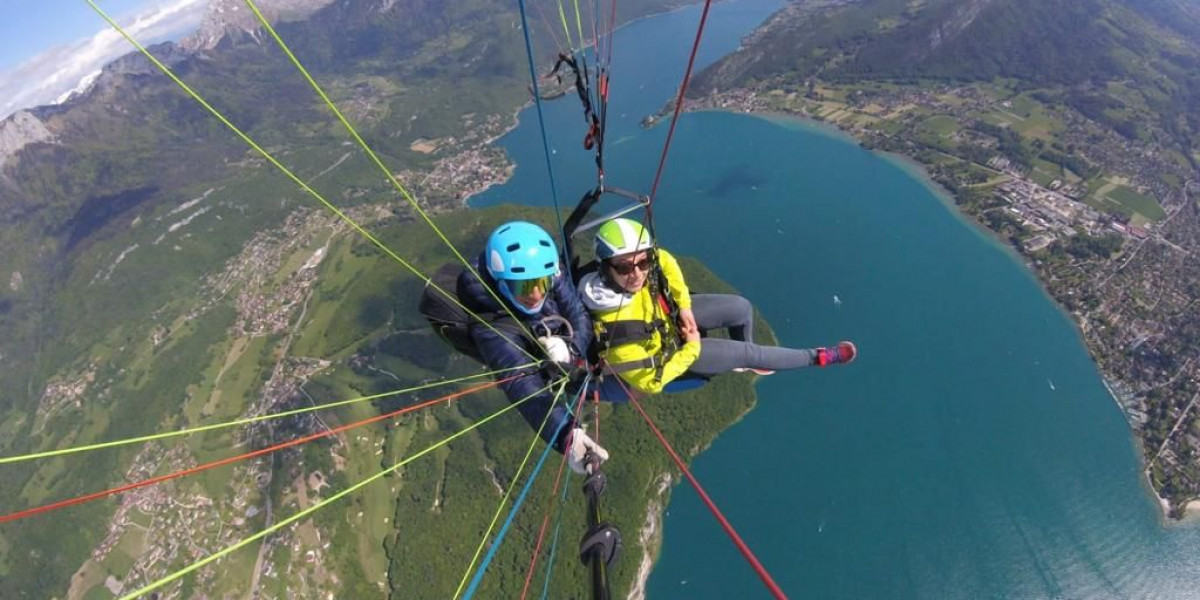Many people in France opt for a first flight in a paraglider. It is a unique and intense experience, which is perfect for people looking for a thrill and an adrenaline rush. However, for your flight to go well, it is necessary that certain conditions are respected such as the maximum weight. Adrenaline Paragliding helps you to know what is the maximum weight to practice this discipline.
How does the weight of a person affect paragliding?
Unlike the parachute from which it is derived, paragliding is a non-motorised aircraft that allows you to take off from the ground, similar to a kite. This gain in altitude is often achieved by descending a slope. During this process, the weight of the pilot affects the paragliding flight enormously. It affects the take-off conditions, and even the flight itself. Regarding the take-off, a minimum wing speed of 15 km/h is necessary for a safe take-off. This condition cannot be met by the instructor running alone. The presence of wind is necessary to facilitate take-off.
Depending on the weight of the individual, the requirements for taking off are different. The heavier the paraglider pilot, the more speed he will need to take off. This is due to the wing loading, which is the ratio of the total weight in flight (TWF) to the wing area of the aircraft. The manufacturers define a weight range for each glider or parachute built. Depending on the level of the individual, there are direct consequences for paragliding. Tandem gliders are designed to carry a weight of between 120 and 230 kg.
Relationship between weight and flight speed
The weight of the pilot has an effect on the paragliding flight in terms of the sink rate and the landing speed. The latter will be lower for a light person than for a heavy one. In other words, the lighter person will enjoy a longer paragliding flight than a heavier person. His speed of arrival on the ground will also be slower.
Therefore, the heavier the load in flight, the greater the flying skills required. Skillful handling of the paraglider wing in a tandem flight for example is more demanding than when jumping alone. This is quite normal, as the ratio of the wing's TPV to its surface area is higher in a tandem flight.
Impact of weight on the behaviour of the glider
The total weight in flight affects the behaviour of the glider. When the wing loading is low, the glider tends to collapse. This happens because the wing is also subject to a lot of turbulence. For the pilot at the top of the allowed range, collapses will be rare, but rather violent. They are caused by the increased pressure inside the wing on the one hand. On the other hand, this particular behaviour of the wing is related to the fact that heavy pilots constantly brake to lengthen their flight.
Apart from that, the distance covered by any individual allowed to fly with a given wing will be the same without wind. It will be different if a heavy and a light person each use a glider of equal wing loading. In this case, the heavy person will be favoured and will be able to cover a greater distance than the light person. This is why in competition, some light paragliders weight themselves down to use wings that are suitable for heavier people.
How to determine the maximum weight of a person for paragliding?
There are several parameters to consider when determining the maximum weight for paragliding. The first factor is the naked weight of the pilot or of the persons if it is a tandem flight. The weight of the clothing worn and the equipment carried must also be taken into account. The latter includes accessories such as helmet, water bag and radio. The weight of the parachute should also be taken into account, as well as the weight of the harness.
By adding this information together, you can obtain the maximum weight of a person for the paraglider. If it is a tandem flight, the same calculations will be made for the pilot and the passenger of the aircraft. It should be noted that there is a very simple method for obtaining the information required. To do this, have each individual ready to fly stand on a scale with all their equipment.
In tandem, it is necessary to be within the range advised by the manufacturers, very light people will not be confident in conditions that are too strong, and conversely, heavy people will not be very reassuring for the pilot at take-off, in zero wind in the morning. For safety reasons, we ask you for your weight, and assign you to the most suitable slot.
To make your first flight, do not hesitate to contact Adrenaline Parapente and its experienced professionals.

